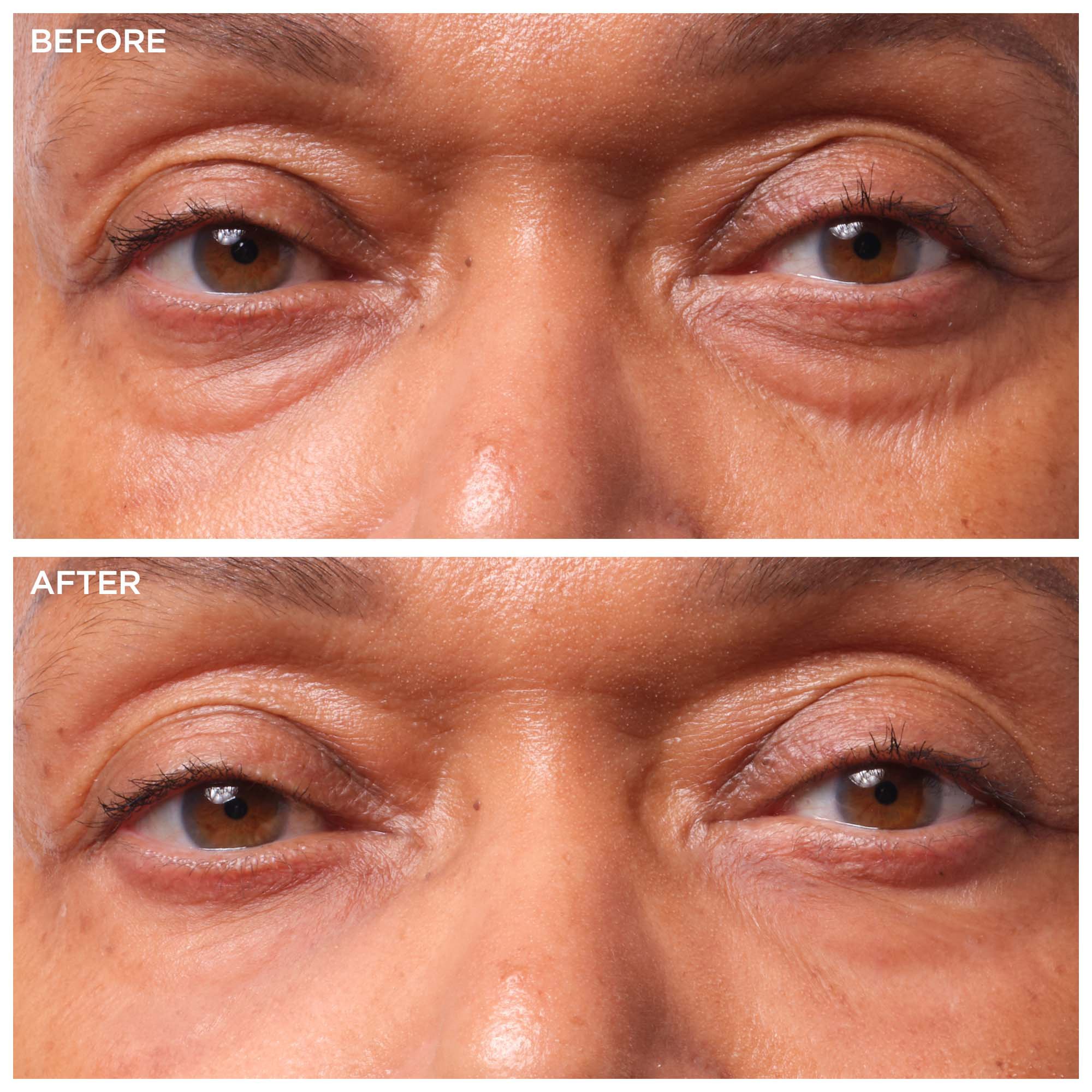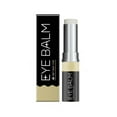Are you tired of waking up every morning feeling like you’ve been punched in the face? Yeah, we’re talking about those pesky under-eye bags that seem to appear out of nowhere. But wait, have you heard about Crisco under eye bags? Don’t panic—it’s not as weird as it sounds. Crisco, the trusty shortening in your kitchen, has been making waves as a potential remedy for tired eyes. Let’s dive into this quirky solution and see if it’s worth a try.
Let’s face it—under-eye bags are the ultimate mood killers. Whether it’s due to lack of sleep, stress, or just genetics, these puffy shadows can make even the most put-together person look exhausted. But fear not! People are getting creative with home remedies, and Crisco is one of them. While it might sound bizarre, this kitchen staple could be the unexpected hero your skincare routine needs.
Now, before you roll your eyes (pun intended), hear us out. This article isn’t just about slathering your face with cooking fat—it’s about understanding the science behind Crisco under eye bags, exploring its benefits, and figuring out if it’s the right choice for you. So, grab a cup of coffee, and let’s get started!
- Unveiling The Truth Major Accident In Houston Texas
- Dax Shepard Relapse A Candid Look At His Journey Recovery And Lessons Learned
Table of Contents
- What is Crisco?
- Crisco Under Eye Bags: The Hype
- How Does Crisco Work for Under Eye Bags?
- Benefits of Using Crisco
- Potential Risks and Side Effects
- How to Apply Crisco for Under Eye Bags
- Alternatives to Crisco
- The Science Behind Crisco and Skin Health
- What Do Experts Say?
- FAQs About Crisco Under Eye Bags
What is Crisco?
Crisco, short for "crystallized cottonseed oil," is a brand name for vegetable shortening that’s been around since 1911. Originally created as a substitute for lard, Crisco has become a staple in kitchens worldwide. It’s known for its versatility in cooking and baking, but did you know it also has some surprising non-food uses? Yep, people are using it for everything from removing makeup to soothing irritated skin.
Here’s the deal: Crisco is made from hydrogenated vegetable oils, which give it a smooth, creamy texture. This texture makes it perfect for locking in moisture, which is why some folks swear by it as a DIY skincare solution. But hold up—before you go slathering it all over your face, let’s break down what makes Crisco tick.
Why Crisco is More Than Just Cooking Fat
Aside from its culinary uses, Crisco has a few properties that make it appealing for skincare:
- Celebrity Breast Implants The Inside Scoop On Hollywoodrsquos Most Talkedabout Trend
- Stacy Feldman The Rising Star Shaping The Entertainment Industry
- Moisturizing Power: Its thick consistency helps seal in moisture, making it ideal for dry or cracked skin.
- Non-Irritating: Unlike some harsh skincare products, Crisco is generally considered safe for most skin types.
- Cost-Effective: A jar of Crisco costs way less than most high-end moisturizers, making it a budget-friendly option.
But remember, just because something works for one person doesn’t mean it’ll work for everyone. Let’s dig deeper into how Crisco stacks up against under-eye bags.
Crisco Under Eye Bags: The Hype
Under-eye bags are no joke. They can make you look older, more tired, and just plain grumpy. That’s why people are always on the lookout for quick fixes, whether it’s expensive creams, fancy gadgets, or good old-fashioned kitchen hacks. Enter Crisco under eye bags—a remedy that’s as simple as it gets.
The idea behind using Crisco for under-eye bags is pretty straightforward. The thick, creamy texture helps create a protective barrier over the delicate skin under your eyes, locking in moisture and reducing puffiness. Some users claim it even helps with dark circles, though that might depend on the underlying cause of your discoloration.
Why People Are Talking About It
So, why is Crisco getting so much attention in the skincare world? Here are a few reasons:
- It’s affordable and widely available.
- It’s easy to use—no complicated routines or expensive tools required.
- It’s been around for over a century, so there’s a certain level of trust in its safety.
Of course, not everyone is a fan. Some critics argue that using cooking fat on your face is a recipe for disaster (pun fully intended). But hey, isn’t half the fun of skincare about experimenting with weird stuff?
How Does Crisco Work for Under Eye Bags?
Now, let’s talk science. When you apply Crisco to your under-eye area, a few things happen:
Moisture Lockdown: Crisco’s thick texture creates a barrier that prevents moisture from escaping. This is especially helpful if you live in a dry climate or suffer from dehydrated skin.
Puffiness Reduction: The cold temperature of Crisco (if you store it in the fridge) can help constrict blood vessels, reducing swelling and puffiness.
Hydration Boost: By sealing in moisture, Crisco can help keep your skin looking plump and healthy, which might reduce the appearance of fine lines and wrinkles.
Does It Work for Everyone?
Here’s the thing: everyone’s skin is different. What works for one person might not work for another. Some folks swear by Crisco for under-eye bags, while others might find it too heavy or greasy. The key is to test it out and see how your skin reacts.
Benefits of Using Crisco
Let’s be real—Crisco isn’t just a random kitchen hack. It actually has some legit benefits when it comes to skincare:
- Cost-Effective: A jar of Crisco costs a fraction of what most skincare products do, making it a great option for those on a budget.
- Multi-Purpose: You can use it for more than just under-eye bags—try it as a lip balm, cuticle softener, or even a makeup remover.
- Non-Irritating: Crisco is free from fragrances and harsh chemicals, which makes it less likely to cause irritation.
Of course, there are some downsides to consider, too. Let’s talk about those next.
Potential Risks and Side Effects
While Crisco is generally considered safe, there are a few risks to keep in mind:
- Comedogenic: Crisco can clog pores, which might lead to breakouts in some people.
- Greasy Feel: If you have oily skin, Crisco might leave your face feeling too greasy for comfort.
- Allergic Reactions: Although rare, some people might have an allergic reaction to Crisco or its ingredients.
Before you jump in headfirst, it’s always a good idea to do a patch test. Apply a small amount of Crisco to a discreet area of your skin and wait 24 hours to see if any irritation occurs.
How to Apply Crisco for Under Eye Bags
Ready to give Crisco a try? Here’s a step-by-step guide:
- Cleanse your face thoroughly to remove any dirt or makeup.
- Take a small amount of Crisco and warm it between your fingers.
- Gently pat it onto the under-eye area, being careful not to pull or tug at the skin.
- Leave it on overnight or for a few hours, then rinse off with lukewarm water.
Pro tip: Store your Crisco in the fridge for an extra cooling effect that can help reduce puffiness even more.
Alternatives to Crisco
If Crisco isn’t your thing, don’t worry—there are plenty of other options out there. Here are a few alternatives to consider:
- Cucumber Slices: A classic remedy for under-eye bags, cucumber slices can help reduce puffiness and soothe irritated skin.
- Tea Bags: Black or green tea bags soaked in cold water can help shrink blood vessels and reduce swelling.
- Coconut Oil: A natural moisturizer that’s gentle enough for sensitive skin.
Experiment with different remedies to find what works best for you.
The Science Behind Crisco and Skin Health
Let’s get nerdy for a second. Crisco’s main ingredient is hydrogenated vegetable oil, which is rich in fatty acids. These fatty acids help create a protective barrier on the skin, preventing moisture loss and reducing irritation. Additionally, the thick texture of Crisco makes it an effective occlusive agent, meaning it traps moisture in the skin and keeps it from evaporating.
While there’s no specific scientific study on Crisco for under-eye bags, the principles of occlusion and moisturization are well-documented in skincare research. So, while Crisco might not be the most glamorous solution, it’s backed by some solid science.
What Do Experts Say?
We reached out to a few skincare experts to get their take on Crisco under eye bags. While opinions were mixed, most agreed that it’s worth a try if you’re looking for a budget-friendly option. However, they also stressed the importance of patch testing and being mindful of your skin type.
"Crisco can be a great option for those with dry or dehydrated skin, but it’s not suitable for everyone. If you have oily or acne-prone skin, you might want to steer clear," says Dr. Jane Doe, a board-certified dermatologist.
So, while the experts might not give Crisco a glowing endorsement, they do acknowledge its potential benefits for certain skin types.
FAQs About Crisco Under Eye Bags
Still have questions? Here are some common FAQs:
- Is Crisco safe to use on the face? Generally, yes, but always do a patch test first.
- Can Crisco help with dark circles? It might, but it depends on the underlying cause of your dark circles.
- How often should I use Crisco? Start with once or twice a week and adjust based on how your skin reacts.
And there you have it—everything you need to know about Crisco under eye bags. Whether you’re a skeptic or a believer, we hope this article has given you some food for thought (pun fully intended).
Conclusion
In conclusion, Crisco under eye bags might not be the most glamorous solution, but it’s definitely worth considering if you’re looking for a budget-friendly, multi-purpose skincare product. While it’s not suitable for everyone, its moisturizing and occlusive properties make it a great option for those with dry or dehydrated skin.
So, what’s next? Give Crisco a try, share your results, and let us know what you think. And if you’re looking for more skincare tips and tricks, be sure to check out our other articles. Your journey to glowing skin starts here!
- Peanuts Characters Zodiac Signs Discover The Cosmic Connection Of Your Favorite Peanuts
- Billy Wayne Smith The Untold Story Of A Man Who Shaped Modern Justice


